The Problem
I need to find and remove all of the equal rows from two tables who's schemas may often change. In this case, equal meaning all values in the rows are equal to each other, for example:
| ID | Message | Date | = | ID | Message | Date |
|---|---|---|---|---|---|---|
| 1 | 'Hello' | 1/1/1999 | == | 1 | 'Hello' | 1/1/1999 |
| 2 | 'Hello' | 1/1/1999 | != | 2 | 'Goodbye' | 1/1/1999 |
| 3 | 'Goodbye' | null | == | 3 | 'Goodbye' | null |
I would like to do so utilizing the EXCEPT keyword, because it does not require me to specify the equality condition for each column and update the query when it has non-key column names changes. I am aware that using wildcards in selects is a bad code smell, however both of these tables will always have the same non-hidden columns, and writing the procedure this way will make the code much easier to maintain.
A possibly important note, one of the tables Table1 is a Temporal table, and Table2 is not. However, the history for Table1 is stored in a separate table, and the queries are not utilizing SYSTEM_TIME (ie, querying current data only).
What I've tried
Table1 is created with the following script:
CREATE TABLE Table1 (
ID INT NOT NULL PRIMARY KEY
, ValidFrom DATETIME2 GENERATED ALWAYS AS ROW START HIDDEN NOT NULL
, ValidTo DATETIME2 GENERATED ALWAYS AS ROW END HIDDEN NOT NULL
, PERIOD FOR SYSTEM_TIME (ValidFrom, ValidTo)
)
WITH (SYSTEM_VERSIONING = ON)
Table2 is created with the following script:
CREATE TABLE Table2 (
ID INT NOT NULL PRIMARY KEY
)
What I have been trying is the following, which I think should be deleting all entries from Table1 for which an exact match across all columns exists in Table2:
DELETE FROM [Table1]
WHERE [Table1].[ID] NOT IN (
SELECT ID FROM (
SELECT * FROM [Table1]
EXCEPT
SELECT * FROM [Table2]
) AS INNER_QUERY
)
However, the SQL Server gives the following unexpected error:
All queries combined using a UNION, INTERSECT or EXCEPT operator must have an equal number of expressions in their target lists.
Yet, the following query works as expected with no issues
SELECT * FROM [Table1]
WHERE [Table1].[ID] NOT IN (
SELECT ID FROM (
SELECT * FROM [Table1]
EXCEPT
SELECT * FROM [Table2]
) AS INNER_QUERY
)

